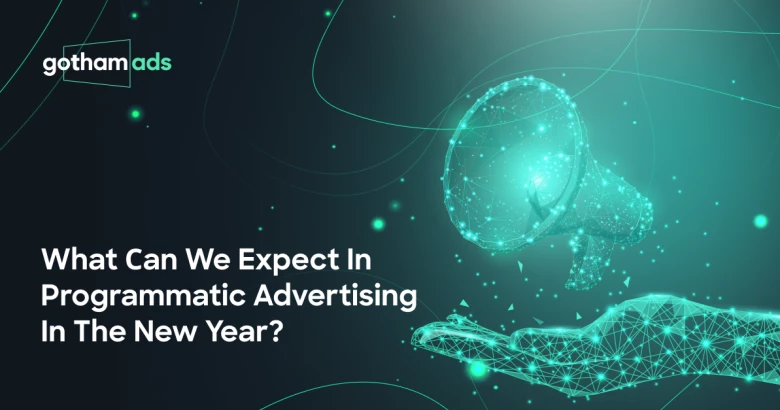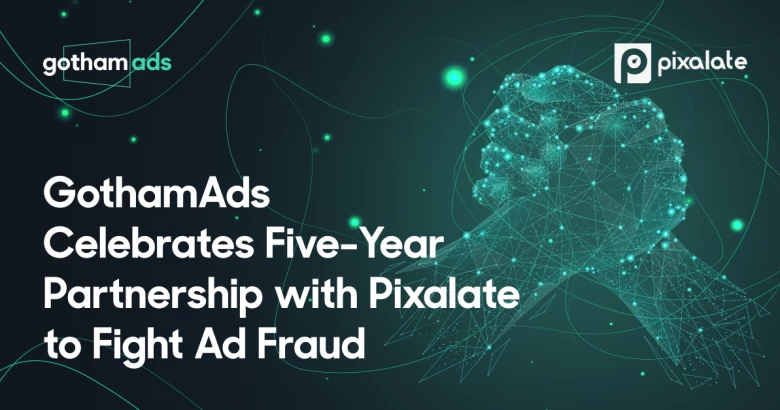ChatGPT and Programmatic Advertising: do they get on together well?

It seems that the future is approaching us rapidly, and soon we will coexist with artificial intelligence in harmony, just like the heroes of science-fiction movies. Neural networks and their ability to create images have recently exploded on the Internet, capturing the attention of many users and greatly worrying artists and designers.
Now it's time for the popularity of ChatGPT. This versatile chatbot can already compete with humans in intellectual and communicative tasks.
In this article, we'll talk about ChatGPT, who uses it, and whether it will be useful for programmatic advertising.
ChatGPT: what is it?
ChatGPT is a chatbot based on artificial intelligence, which can have a dialogue in real time, even in the form of an argument, detect errors in the code, and quickly create scripts, poems, and other textual content.
OpenAI introduced this technological product, and Microsoft was a partner and investor.The universal bot was released in November 2022 and instantly became known worldwide.
According to analysts at Bloomberg, ChatGPT is a universal chatbot. It can be used not only for creating texts and verses but also for:
- conducting financial analysis;
- generating simple code;
- forecasting;
- writing technical articles;
- giving personal advice;
- demonstrating ethical responses.
According to Stanford University, GPT-3 has 175 billion parameters and has been trained on 570 gigabytes of text. By comparison, its predecessor GPT-2, was more than 100 times smaller and had 1.5 billion parameters.
ChatGPT became a real Internet sensation. The service collected its first million users just 5 days after its launch. According to Similarweb, the ChatGPT website has been visited 619 million times and receives 25 million visits daily.
What do AI chatbots mean for programmatic advertising?
Chatbots have become an integral part of many brands' marketing strategies. Gartner says that in 2022, about 70% of white-collar workers interacted with chatbots in one way or another, which is a significant number.
In addition, research from Uberall found that 40% of respondents are interested in interacting with bots, 20% of whom showed extremely high levels of interest. The good news is that some brands seem to get it right. Despite the ambivalence toward chatbots in general, 80% of people who have interacted with a chatbot say the experience has generally been positive.
Programmatic advertising, even without chatbots, relies heavily on machine learning and advances in artificial intelligence, which allows it to remain one of the most effective ways to run modern advertising campaigns.
Adding chatbots to the list of tools (which, to be fair enough, were already on the list) would likely only be a plus and an additional boost to ad tech.
Chatbot AI significantly impacts programmatic advertising by allowing brands to create more personalized and targeted user ads. Chatbots can use AI to collect data on user preferences and behavior, which can then be used to deliver more relevant ads. This can lead to increased engagement and higher conversion rates.
However, keep in mind that at the current level of technology, chatbots cannot replace humans. Even the famous ChatGPT often gives the wrong answers because of occasional associative errors that a live person would never make.
What does this mean for publishers who rely on traditional search traffic?
Chatbots can have both positive and negative effects on publishers who rely on traditional search traffic.
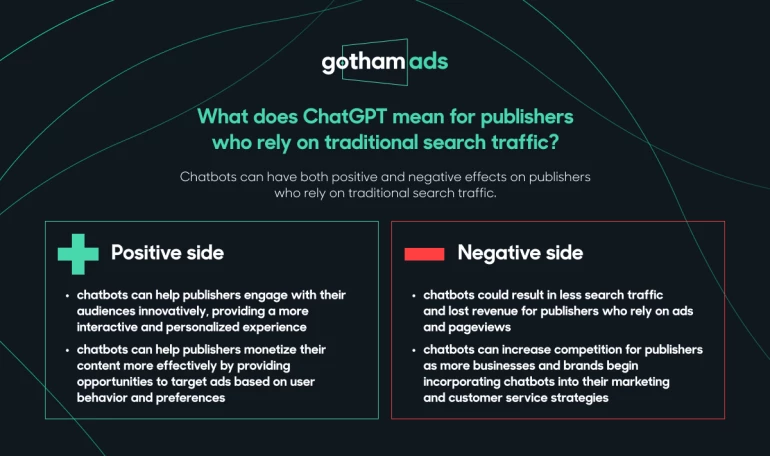
On the positive side, chatbots can help publishers engage with their audiences innovatively, providing a more interactive and personalized experience. This can lead to increased user loyalty, retention, and higher engagement rates.
In addition, chatbots can help publishers monetize their content more effectively by providing opportunities to target ads based on user behavior and preferences. This can lead to more link clicks and conversions and more revenue for publishers.
On the other hand, chatbots can also pose a problem for such publishers. Chatbots are designed to provide instant answers and information, so users may not have to visit publishers' sites as often to find what they need. This could result in less search traffic and lost revenue for publishers who rely on ads and pageviews.
In addition, chatbots can increase competition for publishers as more businesses and brands begin incorporating chatbots into their marketing and customer service strategies. This can lead to a crowded marketplace and increased pressure on publishers to differentiate themselves and offer unique value propositions to their audiences.
What happens when you combine programmatic advertising with ChatGPT?
Undoubtedly, many marketers are thinking about how profitable it would be to merge programmatic advertising with ChatGPT or other similar neural networks. Let's think a bit about the potential advantages and challenges of such a combination.
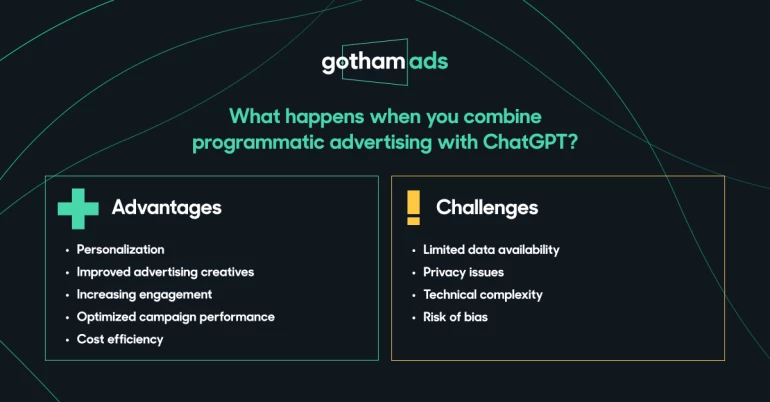
Advantages
- Personalization. Programmatic advertising uses data to target audiences, and ChatGPT's natural language processing and machine learning capabilities help create personalized ads that resonate with customers based on their interests and preferences.
- Improved advertising creatives. ChatGPT will likely be able to create more compelling ad text and visuals based on analysis of customer interactions and preferences. However, this statement cannot yet be said with 100% certainty, as many people may be intimidated by hyper-personalized ads.
- Increasing engagement. Conversational ads created by ChatGPT will allow customers to interact with the ad, which is likely to increase engagement and may also boost conversions.
- Optimized campaign performance. ChatGPT's machine learning capabilities allow you to analyze ad performance data and provide insights on improving campaign effectiveness leading to better ad targeting, ad creatives, and higher conversion rates. Now, even more, analytics work can be done by neural networks.
- Cost efficiency. Programmatic advertising offers real-time bidding and ad delivery that saves money by reducing the need for manual intervention. Using ChatGPT to optimize ad campaigns, advertisers can minimize irrational ad spend and increase ROI.
An excellent example of such optimization (with the help of an AI) is at McDonald's, which turned to IBM Watson Advertising to drive attention to its limited-edition McCafe specialty coffee promotion. McDonald's used compelling and impressive backgrounds and memorable images in its ads to achieve this goal.
McDonald's used IBM Watson Advertising data and statistics from its stores to evaluate the advertising campaign results. Here they are:
- ~ 5,000,000 ad impressions;
- 168% more effective price per visit compared to category benchmarks;
- 0.71% CTR for mobile branded backgrounds + 25% over the benchmark;
- 79% of open users visited McDonald's restaurants within 3 days.
Challenges
- Limited data availability. ChatGPT's effectiveness depends on the availability of call data, which may not always be available or reliable. ChatGPT cannot provide accurate information or create effective advertising if the data is insufficient or of poor quality.
- Privacy issues. The combination of programmatic advertising and ChatGPT can raise privacy concerns, especially if customer data is collected and used without their consent. Advertisers must be transparent about collecting and using data and protect customer privacy. For example, one of the adtech giants was accused of operating what it dubs a “manipulation machine”, via the application of a suite of tracking techniques and data processing practices which are designed to profile web users so they can be targeted with behavioral ads and advertisers pay for “individual-level shopper predictions”. So this company has been found in breach of European Union data protection regulation and hit with a €60 million sanction (~$65 million) by the country’s national privacy in August 2022.
- Technical complexity. Integrating ChatGPT into programmatic advertising can be technically challenging. Not every site has the necessary tools to integrate such a complex system.
- Risk of bias. ChatGPT's machine learning algorithms can be biased because they learn from the given data. Advertisers should ensure their training data is diverse and unbiased to avoid reinforcing preconceptions.
- Increased spending. While programmatic advertising can save money by automating ad-buying, integrating ChatGPT may require additional resources and investment.
So what's coming up?
Artificial intelligence has been integral to programmatic advertising for quite some time. It has done so with tools such as clustering and pattern matching, customizing the message with AI-powered hyper-personalization, and determining the most appropriate time and medium for communication through pattern identification.
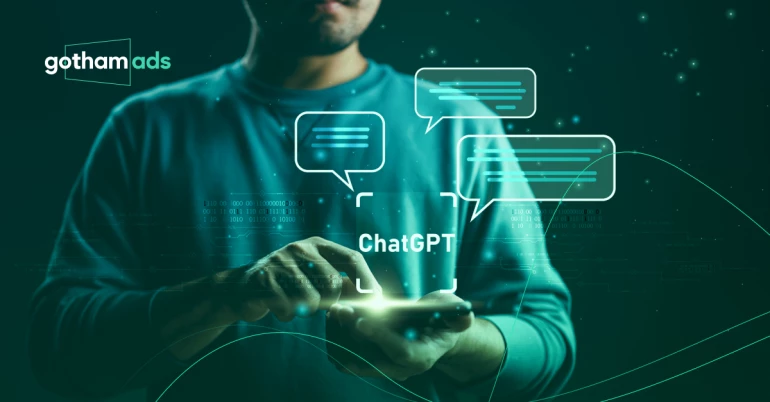
However, with the advent of ChatGPT, there are some changes to the usual way advertising platforms work. However, we can speculate on how this will affect major advertising formats. GothamAds works with each of these formats and provides a quality result in the process of use.
In-app banner
In-app banner ads are a popular type of mobile advertising which GothamAds works with. They can target specific audiences based on age, gender, location, interests, and browsing behavior.
Integration with ChatGPT can help this type of advertising increase personalization by designing improved creatives based on user behavior and interests. This kind of integration can also greatly increase the automation of the advertising process.
Mobile Web Banner
Banner ads on mobile sites are a popular type of digital advertising because they are relatively easy to create and place in strategic locations on mobile sites to attract users' attention. Their effectiveness can also be tracked through metrics such as click-through rates (CTR) or conversions, and this data can be used to optimize ad campaigns for maximum effectiveness.
You can significantly increase personalization by integrating ChatGPT with mobile web banners.
Video
Video ads have been one of the most popular advertising formats for years. Such ads can be shown on sites with video players (in-stream format) and sites without such a player (out-stream format).
Integrating with ChatGPT allows such ads to be more interactive and personalized (e.g., creating a game format for ads with branching choices). In addition, the integration will allow you to optimize your advertising costs by increasing the automation of the bidding process.
Native
Native advertising is a form of digital advertising that merges with the content and style of the platform on which it appears, giving the impression that it belongs there.
One of the key benefits of native ads is that they can attract attention and engage users more effectively than traditional forms of advertising. Because they look and feel like platform content, users are likelier to interact with them and perceive them as less intrusive.
However, it's important to note that native ads need to be clearly labeled as ads so that they don't deceive or mislead users.
For this format, integration with ChatGPT could be the next step, making this format even more relevant. Since neural network algorithms are based on existing data, it will be much easier for them to mimic any resource or platform than a live person.
CTV
CTV advertising, or connected TV advertising, is a form of digital advertising delivered through streaming TV services such as Hulu, Amazon Prime, or Netflix on Internet-connected TV devices such as smart TVs, set-top boxes, or streaming sticks and game consoles.
One of the key benefits of advertising on CTV is the ability to reach a highly engaged and targeted audience. With the growing popularity of cable TV, many viewers prefer streaming services over traditional TV. This allows advertisers to reach an increasing audience on programmatic CTV ad platforms. Integration of ChatGPT with this medium can also add a hyper-personalization feature and make ads more interactive.
Conclusions
Although we haven't realized it yet, AI is already updating the advertising world, simplifying its strategies, and revolutionizing its marketing approach. AI has taken root in all areas of advertising, offering advertisers the opportunity to get the most out of their ad spend.
And ChatGPT is now the most global symbol and driver of change to come. It can't be ignored. It's now a fairly handy tool for many different marketing purposes. However, it takes a little more time and data to see how great and valuable it really is for the world of programmatic advertising.

